People of all ages can benefit from chiropractic care to treat common conditions like tight muscles, nerve discomfort, and herniated discs. Every year, more than 35 million Americans obtain chiropractic care from doctors who practice in different regions. After receiving relief from chiropractic care, many patients are happy to recommend their favorite chiropractors to friends and family. Regrettably, inaccurate information occasionally discourages referrals from obtaining treatment. Despite the fact that chiropractic care is becoming more common, many people still worry that the hazards outweigh the advantages. Review these myths for clarity if you’ve been putting off making an appointment because you have misgivings about the chiropractic profession.
1. Chiropractors Are Not Actual Doctors and Do Not Go Through Much Training
This misconception has been circulating for quite some time. The argument rests on the premise that chiropractors are not legitimate medical practitioners since they do not get a medical degree (known as an M.D.). However, every chiropractor holds a degree known as “Doctor of Chiropractic,” which indicates that they have completed additional professional medical studies to locate, detect, and correct vertebral subluxations, also referred to as misalignments of the spine.
After finishing their undergraduate education, chiropractors are required to undergo a graduate program that normally lasts for an additional four years. This is standard for all medical specialties. In addition, the licensing of chiropractors is required nationwide, and candidates must do well on a four-part test administered by the National Board of Chiropractic Examiners. Finally, to reiterate, to maintain their licenses, chiropractors must participate in annual continuing education classes, just like all other types of medical professionals.
Chiropractors often spend the same number of years of training as other physicians. Typical undergraduate degrees that chiropractors have to include biology, chemistry, or other health sciences. Many have certifications in physical therapy and nutrition, as well. A chiropractic degree takes between three and six years of education, which is followed by clinical internships during which the newly-graduated student is mentored by a more senior chiropractor.
2. I Have the Ability to “Crack” My Own Back
At some point in their lives, everyone has either felt or heard their back “crack” or “pop.” The ability to crack your back on demand is expected, and many individuals do it frequently because it feels nice and appears to ease tension or the feeling of being “stuck.”
The difficulty with this is that there is neither a plan nor any understanding of the fundamental problem that is the source of the “stuck” feeling that people are experiencing. When someone “cracks” their own back, they are forcibly moving their bones into unnatural positions in order to achieve a sense of release. This practice can be extremely risky, and it frequently results in more problems than it solves, not to mention the potential for adverse long-term effects.
When a chiropractor adjusts you, you feel better. You have the peace of mind that comes with knowing that your bones are being guided back into their appropriate positions, ultimately resulting in better alignment of your spine. When subluxations of the vertebrae in the spine are present, this can create irritation of the nerves, or even a pinched nerve, all of which can lead to discomfort and a decline in function. Subluxations are defined as bones that are slightly out of place but are not totally dislocated.
The subluxations damaging your central nervous system can be corrected by adjusting your spine. This will allow for improved communication within your body as well as an overall improvement in your health. A chiropractor is the only type of medical practitioner who receives the specialized scientific training necessary to identify and treat subluxations and restore normal nerve function.
3. Once You See a Chiropractor Your Will Be Forced to Receive Adjustments Endlessly
The notion that “once you start, you can’t quit” is a misconception that has been circulating for years, leaving many individuals confused about the necessary amount of time for chiropractic treatment. The treatment period for many people can vary anywhere from one week to three months or even more, depending on any injuries or diseases they are currently dealing with.
However, once you begin receiving chiropractic care, you are under no circumstances required to keep coming back consistently for the rest of your life to maintain the relief you have been experiencing. Chiropractic, in contrast to pain medication, investigates the causes of your discomfort and strives to resolve the underlying problems so that you can lead a life that is pain-free by nature.
When you go to the root of the problem, rather than just covering up the symptoms, you are always looking for a solution that will be more permanent. After any initial problems have been resolved, many people continue going to their chiropractor for periodic “tune ups” in the same way they would go to the dentist for cleanings.
4. Chiropractic Adjustments Hurt
Many prospective patients are scared off by the cracking and popping sounds that an adjustment frequently makes, yet it is a very safe and non-invasive procedure. Air pockets flowing through joint fluid are frequently the cause of the noises patients experience during adjustments.
An adjustment to your back is painless and will make you feel better, much like cracking your knuckles. Although some patients claim to feel sore after an adjustment, similar to how you might feel after a vigorous workout or deep massage, adjustments are not painful and, when done by a trained practitioner, carry a very low risk of injury. Most patients actually feel a sense of relief and relaxation during and after treatment.
5. Chiropractic Care is Expensive and Insurance Doesn’t Cover It
The cost of a visit is one of the most talked-about chiropractic fallacies out of all of them. The good news is that visiting your chiropractor costs almost as much as seeing your primary care physician. Depending on the type of treatment obtained and the insurance company, most insurance policies also cover out-of-pocket expenses for chiropractic care. The majority of clinics provide unique plans for people without health insurance.
Once upon a time, chiropractic care was considered “alternative medicine.” Those days are long gone. Many private and employer-sponsored health plans include chiropractic care as preventative care as well as drug-free pain treatment. In fact, according to the ACA, up to 87% of insured workers may have access to chiropractic care through their health insurance.
6. Chiropractic Treatment Is Exclusively for Adults
Although there is a growing need for chiropractic treatment among adults, it can also be helpful for children and infants. In order to specialize in pediatric care, some chiropractors go through additional training.
7. Chiropractic Patients Need Referrals
Some new patients think of chiropractors as their final resort for care when all other choices have failed. When symptoms persist after seeing their primary care doctor and other medical professionals, many turn to chiropractic care. It’s not incorrect to seek advice from several healthcare professionals, however chiropractors frequently evaluate symptoms using the same methods as other medical professionals. Your primary care physician will normally perform a physical exam when you tell them that you are in pain. The doctor may prescribe diagnostic testing, such as a CT scan, MRI, or X-ray, if the examination is inconclusive. Chiropractors use the same methodology, but they have the resources to start treating your issues right away. Chiropractic doctors may diagnose and treat patients, unlike primary care physicians who frequently write prescriptions for drugs or refer patients to physical therapists.
8. Chiropractic Treatment is Only for Back Pain
While spinal misalignment can cause a plethora of back complications, manipulation of the spine can reduce pain in other areas of the body. If you are suffering from migraine headaches or sciatica, for example, spinal alignment can help relieve your pain. Chiropractic care extends much further than simply the back. Adjustments in the ankles, feet, hips, shoulders, neck, and other body parts are common practice for our Chattanooga chiropractors.
9. Chiropractic Adjustments are a New Form of Medical Treatment
Chiropractic care has actually been around since the fourth century A.D., despite not going mainstream until about 30 years ago. DD Palmer, the first “modern-day” chiropractor, began treating patients in 1895, according to the American Chiropractic Association (ACA). Chiropractic care has been around for a long time, and the techniques used by our doctors have been refined over many years to only include the safest and most success-proven methods.
Chattanooga Chiropractor | Georgia Chiropractor
Contact Atlas Total Health Chiropractic if you’re interested in learning more about the advantages of chiropractic care. We are pleased to address any of your concerns and all of your questions. Our caring chiropractors have years of experience and enjoy assisting patients in leading pain-free, fulfilling lives. Ask us how we may help you with spinal-related problems, whether you have a sore neck, shooting pain in your legs, or any other pain in between. Contact Atlas Total Health Chiropractic by calling (866) 668-0108 or contacting us online to schedule your consultation. Discover what we can do for you to assist you with feeling better and restore you to optimal health.


